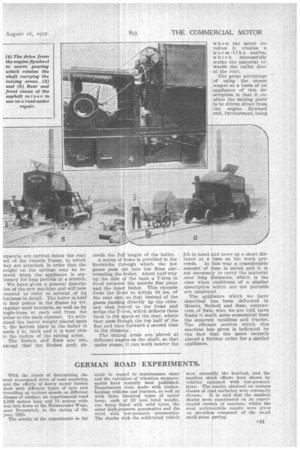GERMAN ROAD EXPERIMENTS
Page 63

If you've noticed an error in this article please click here to report it so we can fix it.
With the object of determining the Most economical form of road surfacing and the effects of heavy motor lorries shod with different types of tyre and travelling at v&rious speeds on different classes of surface, an experimental road 1,080 metres long and 11 metres wide was laid down at the Bienenroder Wege, near Brunswick, in the spring of the year 1025.
The results of the experiments so far made in regard to maintenance costs and the valuation of vibration measurements have recently been published. Experiments were made with timberhaulage vehicles and tractors, as well as with three identical types of motor lorry, each of 10 tons total weight, one being fitted with solid tyres, the other high-pressure pneumatics and the third with low-pressure pneumatics. The shocks with the solid-tyred vehicle were naturally the heaviest, and. the smallest shock effects were shown by vehicles equipped with low-pressure tyres. The results obtained on various classes of road surfacing were extremaly diverse. It is • said that the smallest shocks were experienced on an experimental stretch of concrete, whilst the most unfavourable results were given on stretches composed of the usaal small stone paving.












































































































